How to prune Wisteria: Winter & summer pruning guide for beginners
 Lee Burkhill: Award Winning Designer & BBC 1's Garden Rescue Presenters Official Blog
Lee Burkhill: Award Winning Designer & BBC 1's Garden Rescue Presenters Official Blog

Growing a wisteria in your garden can be one of the most impressive plants to welcome you home. In summer, wisteria has jaw-dropping pendulous (raceme) lilac flowers that hang down like purple pendants in mid-summer. These climbing giants can add a green vertical gardening layer to your home. Whether it is around a door to soften an entrance, grown as a standard for a container garden or providing a draped walkway of purple flowers in summer, there really is a wisteria for all-sized gardens.
Let's take a look at wisterias and how to prune them for flowers year after year!
This page contains affiliate links for products I use and love. If you take action (i.e. subscribe, make a purchase) after clicking a link, I may earn some gardening commission which helps me keep the Garden Ninja Blog free for all.
Wisteria is a deciduous (drops its leaves in winter) woody climbing plant native to China, Japan and the USA. They are fast-growing plants with amazing displays of lilac and purple flowers in summer.
There are ten species of wisteria. The three most commonly grown in gardens are:
The wisteria is actually part of the pea family, the Fabaceae and has compound leaves. Compound leaves are individual leaflets on a stalk that can help you spot both wisteria and other pea family plants. You'll even recognise the wisteria flowers as looking very similar to the Sweet Pea.
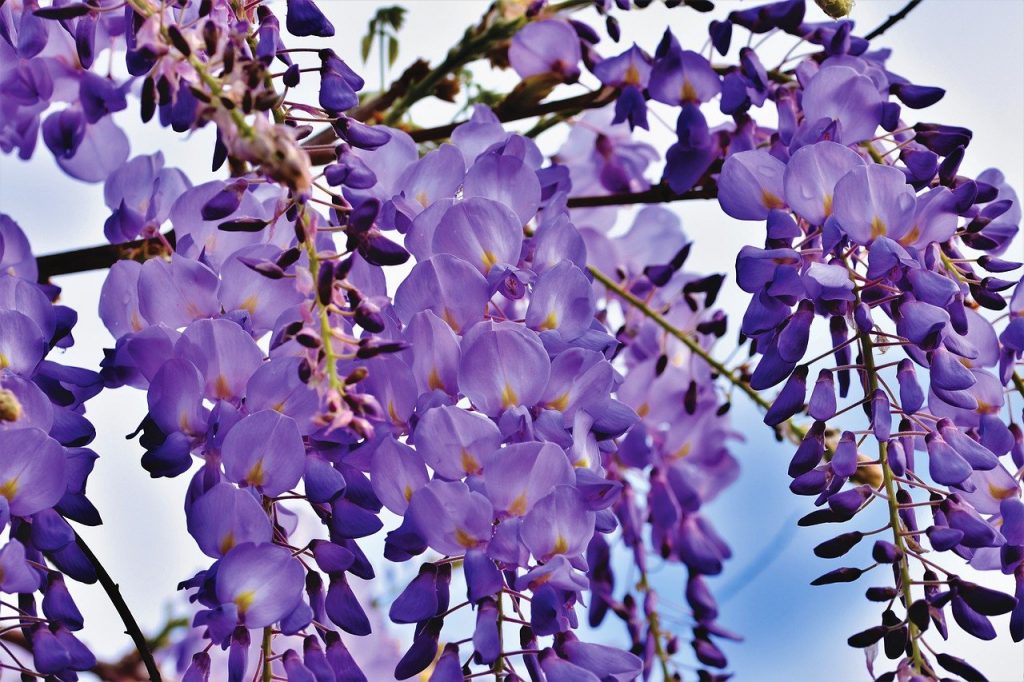
Wisterias have huge symbolism around the world, in particular Japan. Given the fact they live so long - around 100 years, wisteria are often seen as a symbol of everlasting wisdom. Wisteria also symbolises longevity and endurance, given they are as tough as old boots!
Did you know that you can take my course and learn how to become a Garden Ninja yourself? Click here for details
Pruning wisteria is essential to ensure a healthy plant and flowering year after year. Without pruning, your wisteria will grow rapidly putting out lots of leafy green growth in all directions. They also can send out runners from the base of the plant in their search to colonise the garden.
These runners can take precious energy away from flowering, so it needs to be managed.
Wisterias in the wild send out runners and put on lots of foliage to ensure they have the best chances of survival, and whilst your wisteria will still flower, if you do this, it may take 12-25 years.
By pruning your wisteria, you are helping to shape it to the structure or property you're growing it up. Pruning helps divert energy away from areas of the plant to other areas. With wisteria pruning, we are aiming to restrict the green leafy whip growth and focus the energy back to flowering spurs.
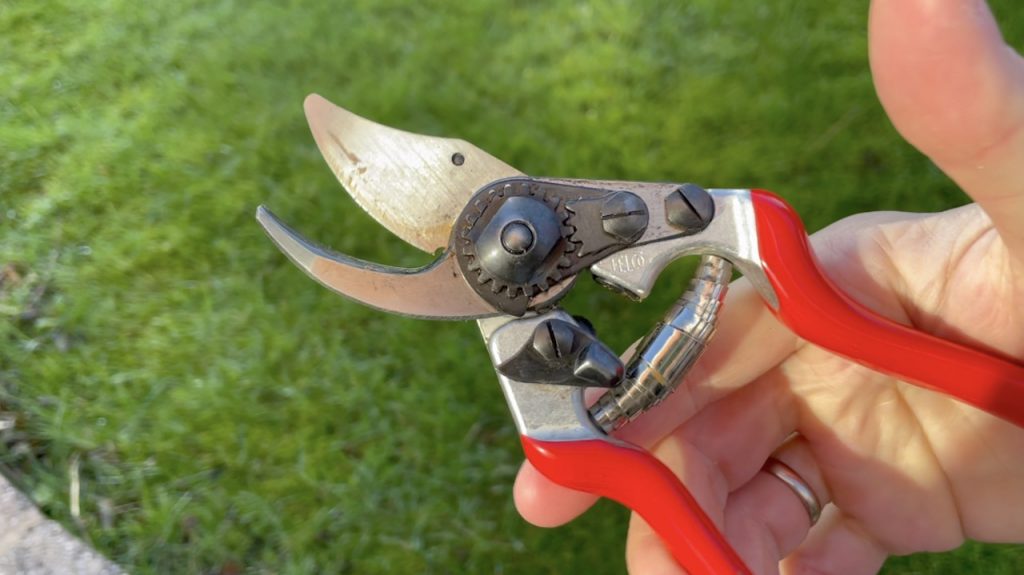
You need to prune wisteria twice a year. Once in summer after it has flowered (late July) and then again in Winter (February).
Pruning wisteria twice a year helps to:
Winter is the prime time to prune wisteria ready for flowers in summer. It's this process that enables you to focus the plant's energy on creating flowering spurs rather than sending out all of its energy into green whippy wisteria growth.
It's this long growth that zaps the energy from wisterias taking it away from flowering and into taking over whatever structure they are planted next to.
In winter we cut back wisteria to 3 buds.
So let's look at the beginner gardening steps to prune a wisteria easily.
When pruning wisteria in winter, you will be met with lignified/woody branches and stems. It's important that you use a pair of sharp, clean secateurs that are capable of cutting sometimes pencil-sized stems from the wisteria. I use Felco secateurs which are fantastic as they last a lifetime, and all the parts can be replaced in damaged or they become worn out.
Don't be tempted to use scissors or a knife. The cleaner the wisteria cut, the better the climber will heal, which helps flowering over recovery of the wisteria.
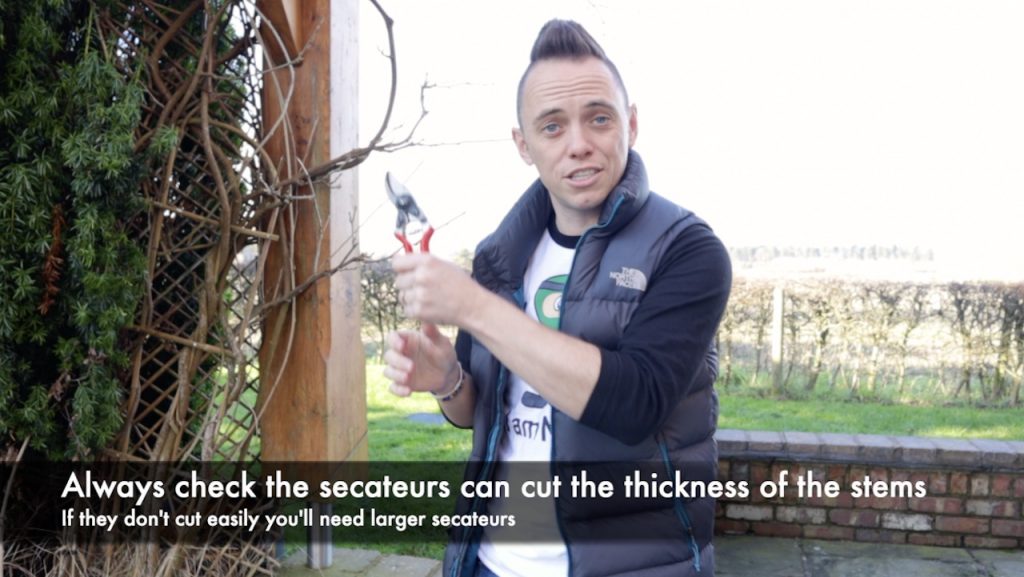
If you have to use brute force to get the secateurs or snips to cut, you need bigger secateurs. Don't force them, as you will damage your secateurs, wrists and your wisteria.
Make sure you keep your secateurs sharp, too, which will make the job far easier!
Locate the side shoots of your wisteria. These are shoots that come off from the main thick stems of your wisteria. You then want to count 3 buds from the base of that stem.
You can spot buds as little red or dark purple lumps that have broken through the woody shoots. You can feel them with your fingers as little bulges. These are the buds that are going to grow into both foliage and potential wisteria flowers this year.
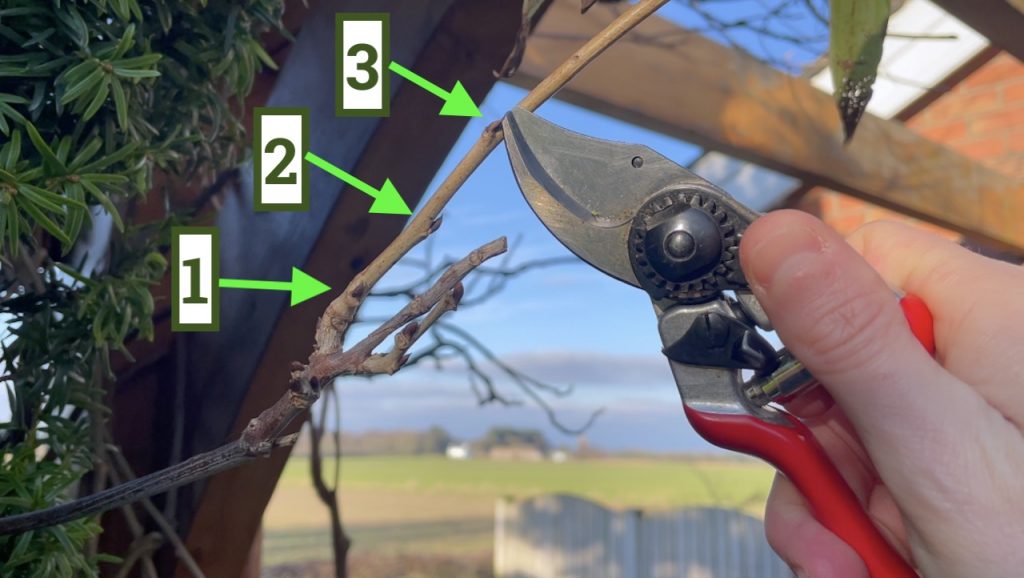
Now that you have identified the Wisteria buds, it's time to count! You want to make a cut just above the 3rd bud. This is counting from where the lateral joins the stem and counting outwards. (Don't count from the very end backwards as some online guides show you!)
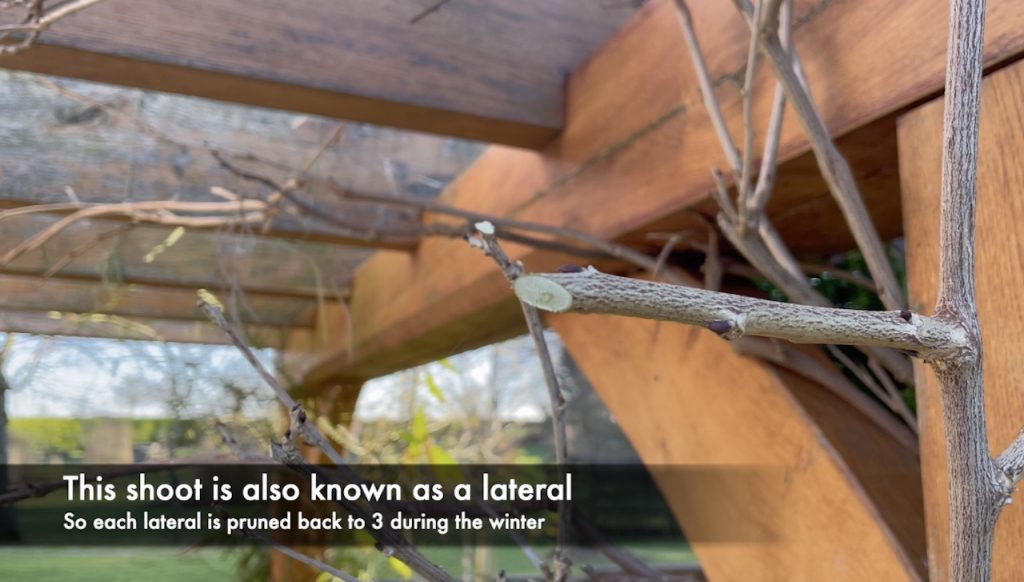
When making any pruning cut above a bud or lateral you want to make the cut on a diagonal 3mm above the bud. See below for an example of a poor pruning cut and then a good pruning cut.
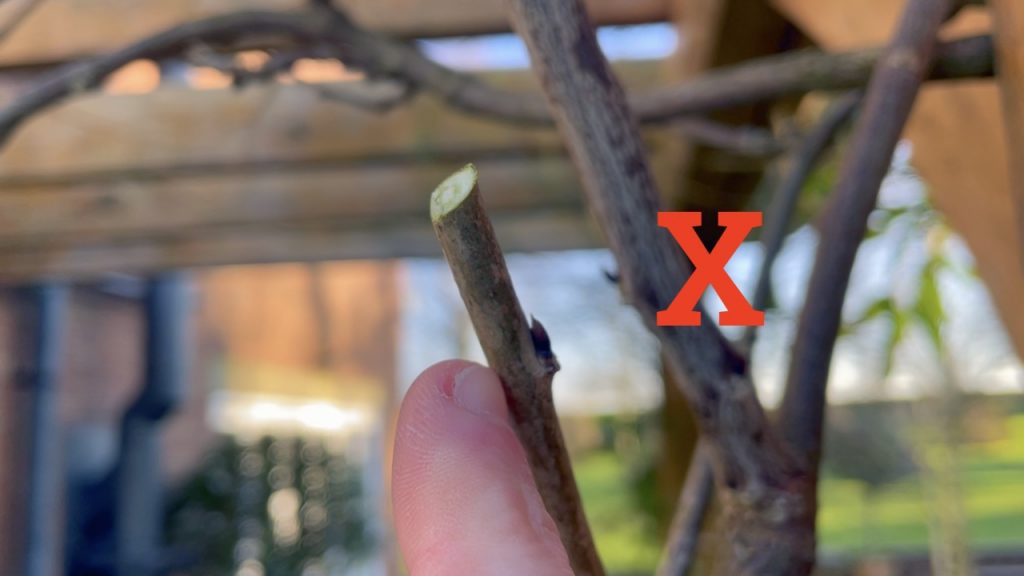
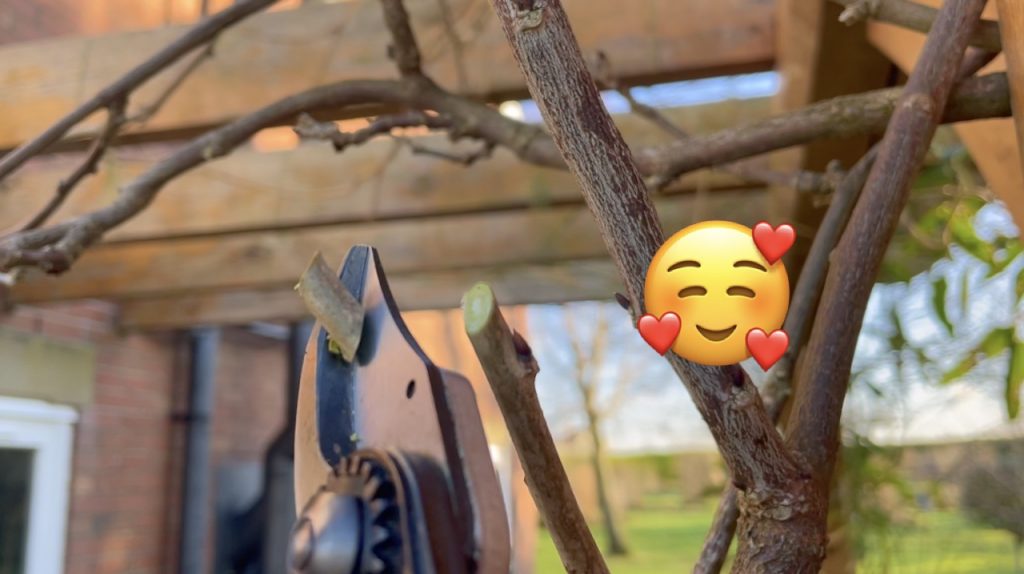
The first bad example has left too much stem above the cut. This will die back, leaving a black brittle stump, which is not good for plant health. The second image shows the amount of 'spare' stem you should leave. This will heal nicely and provide a clean, healthy pruning cut.
Take your time cutting back all laterals to 3 buds across the wisteria. If you come across laterals that are in the way or are growing out too much, cut them right back to their 'parent' stem to stop them from growing.
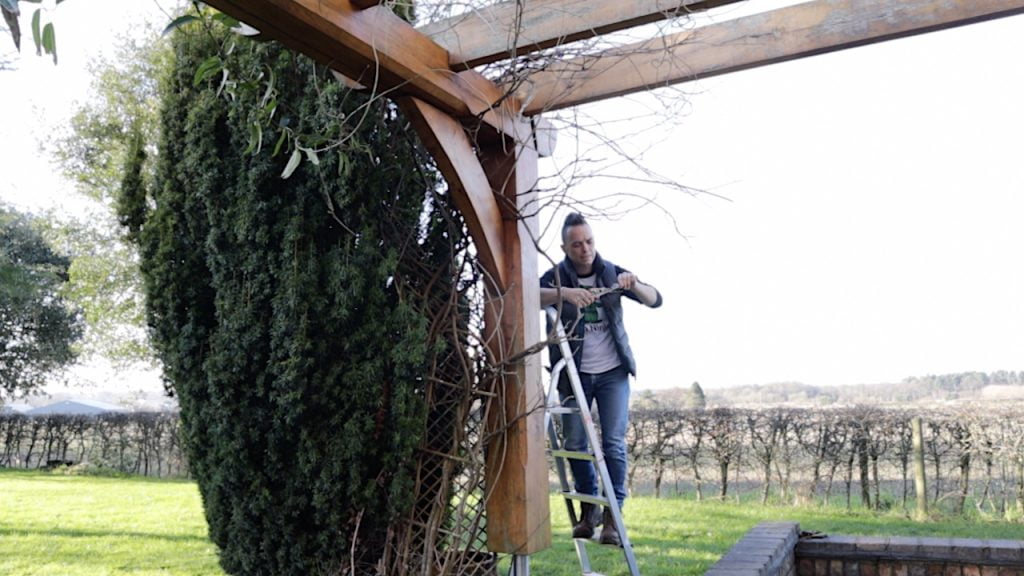
You can also remove any 'runners' that spring up from the very base. You can recognise these as they are bright green long, and flexible. These will zap the energy from the rest of the plant so best to remove them.
Once you have finished pruning your wisteria back to 3 buds and removing any runners or vigorous shoots from the base, you are left with several woody prunings. Don't just bin them, though; they make excellent kindling for log burners or can be chopped up and added as a carbon layer for your compost bin.
You could even use them in bug hotels too for solitary bees and other insects to make a home with them!
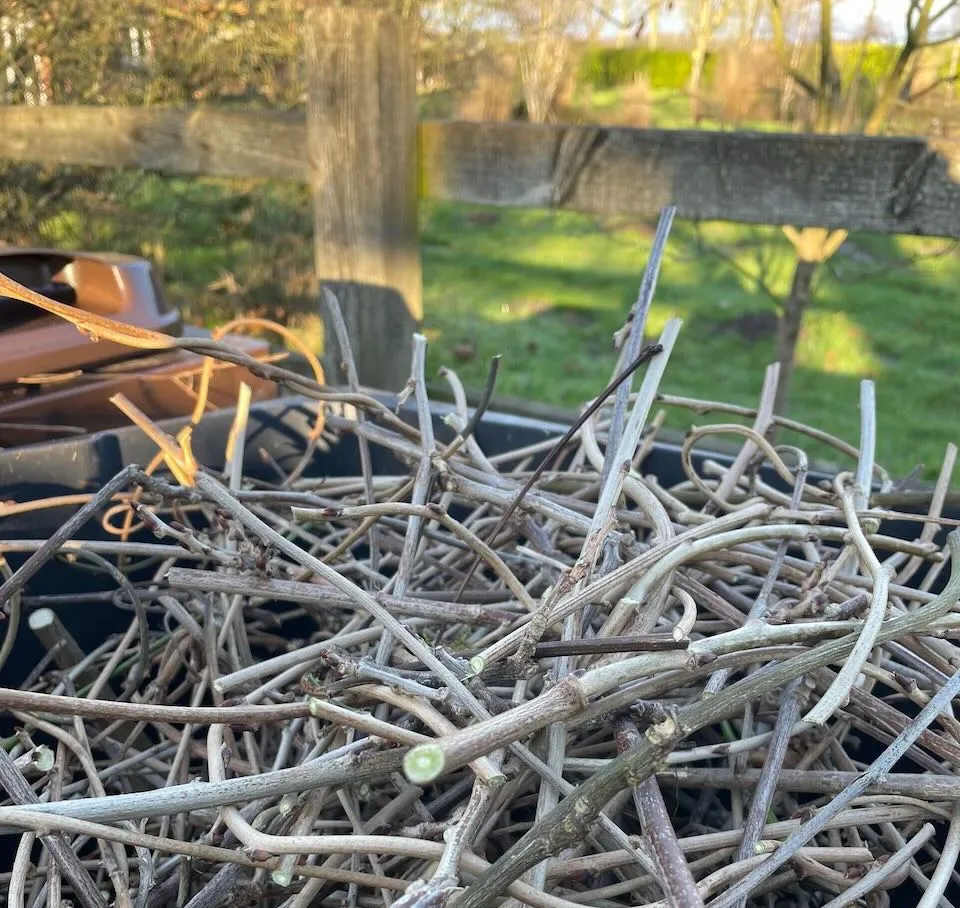
Summer pruning of wisteria follows the same guidelines but takes back the growth to 6 buds not 3. This is because we want to prevent too much green whippy growth after flowering. If we don't prune, the wisteria will put all its efforts into foliage again and may get out of hand.
Summer pruning involves cutting back wisteria to 6 buds after flowering - usually late July or August in the UK - we can help keep the wisteria neat and tidy. If we don't do this, it can mean lots of tying in over the winter to then prune these longer stems back out again. What a faff!
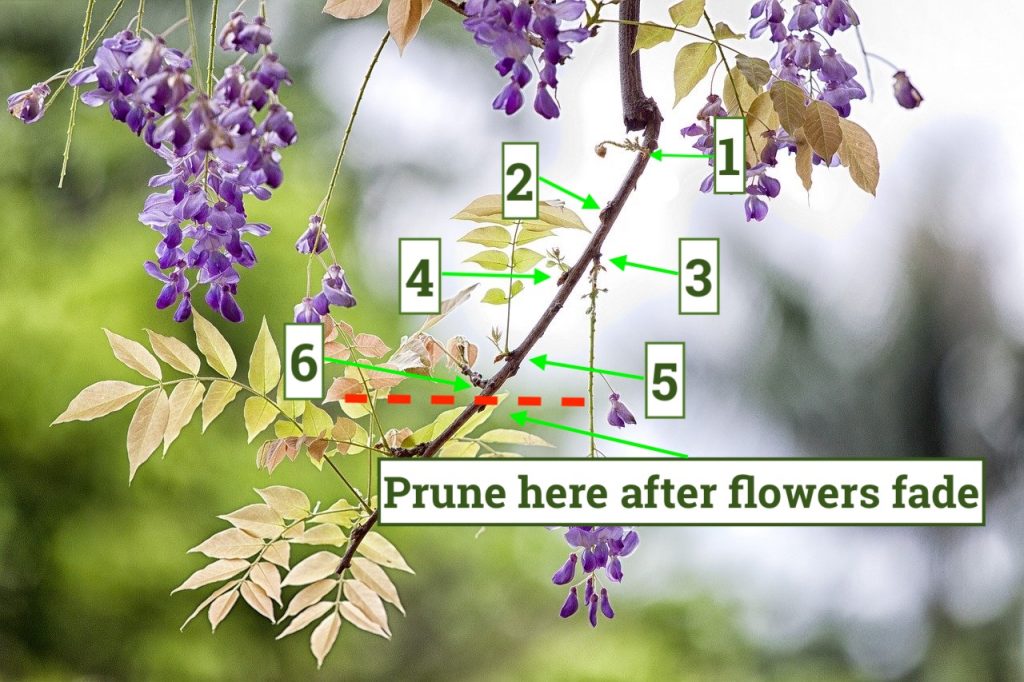
So use the pruning guide above in summer to cut back to 6 wisteria buds in summer.
Then in winter (around February), we shorten the wisteria further by pruning to 3 buds.
I hear from so many followers that their wisterias never flower. With proper pruning, all established wisterias that are in the place should flower. Patience is a virtue of all successful gardeners.
The most common issues with wisterias that don't flower are:
Wisterias are not plants that like to be rushed. They can take up to 7 years once planted before they flower. This is because they only flower once they have established a suitable root system and have enough structure above ground to then think about reproducing via flowers.
Don't forget, any plant that produces flowers is therefore aiming to reproduce using some form of seed from that flower.
Although wisterias can take 7 years to flower, they really are worth the wait. Especially given the rustic charm of their woody twisted branch network and lilac summer racemes of hanging flowers.
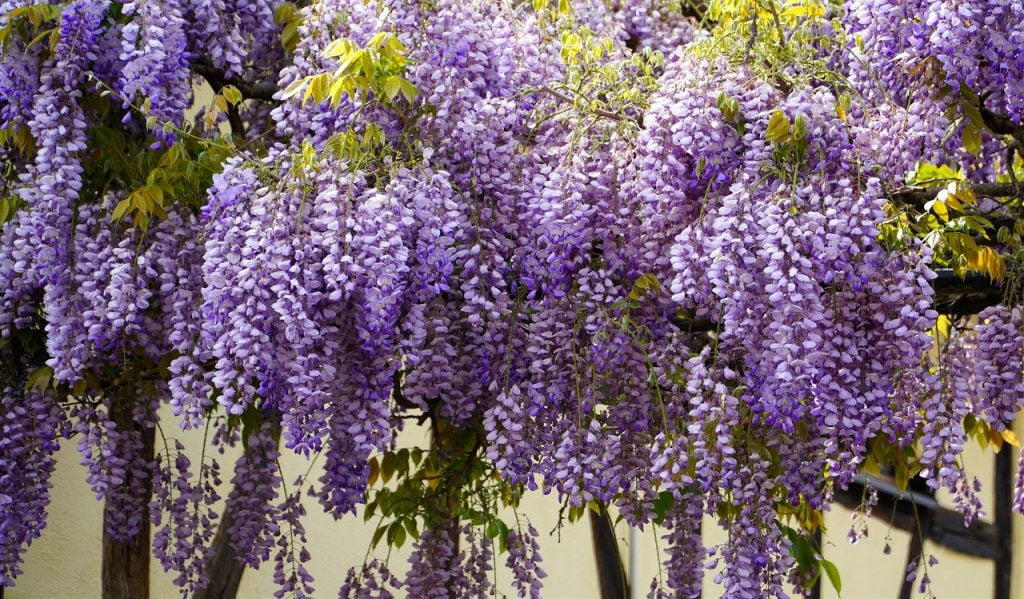
A mature adult wisteria can reach around 10m (33ft) in tree form or spread up to 20m (66ft) against a wall, pergola or archway. They require regular pruning and cutting back each year to promote flowering in summer and also control their scrambling growth!
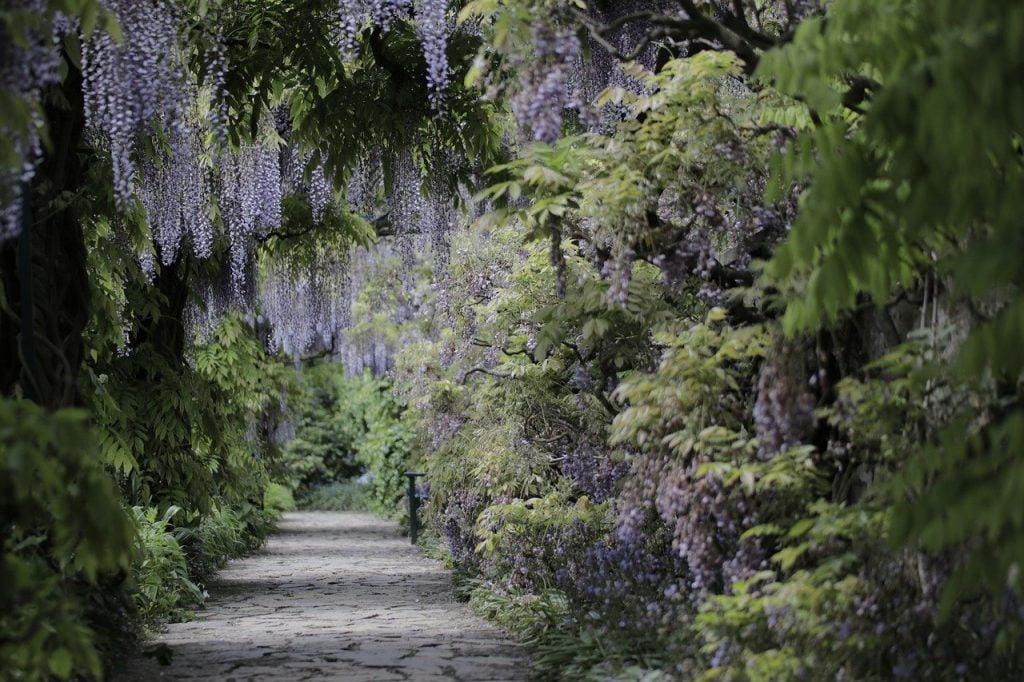
Whilst you can grow wisteria in a container they will need regular feed and eventually outgrow their pot. It's best if you have a small garden or need a wisteria in a limited space to choose a standard wisteria. This is a wisteria that has been grown and pruned to have one main stem. When growing wisteria as a standard its ultimate growth can be reduced due to the limited branch network.

Wisteria like bright sunny south facing positions in the garden. Whilst wisteria will grow in partial shade, this is likely to be at the loss of flowers each summer. They will survive in pretty much all soil types but don't like waterlogged or boggy soil conditions. If you have heavy clay soil it may be best to help open up the soil structure with some peat-free compost worked into the soil and a heavy mulch once the wisteria is planted.
Wisterias can cope with exposure, but windburn may make the leaves unsightly and cause the flowers to drop off prematurely if in a very windy site. Usually, you will see them grown-up walls and pergolas in warmer positions where the wall or structure can help retain heat during the summer months.
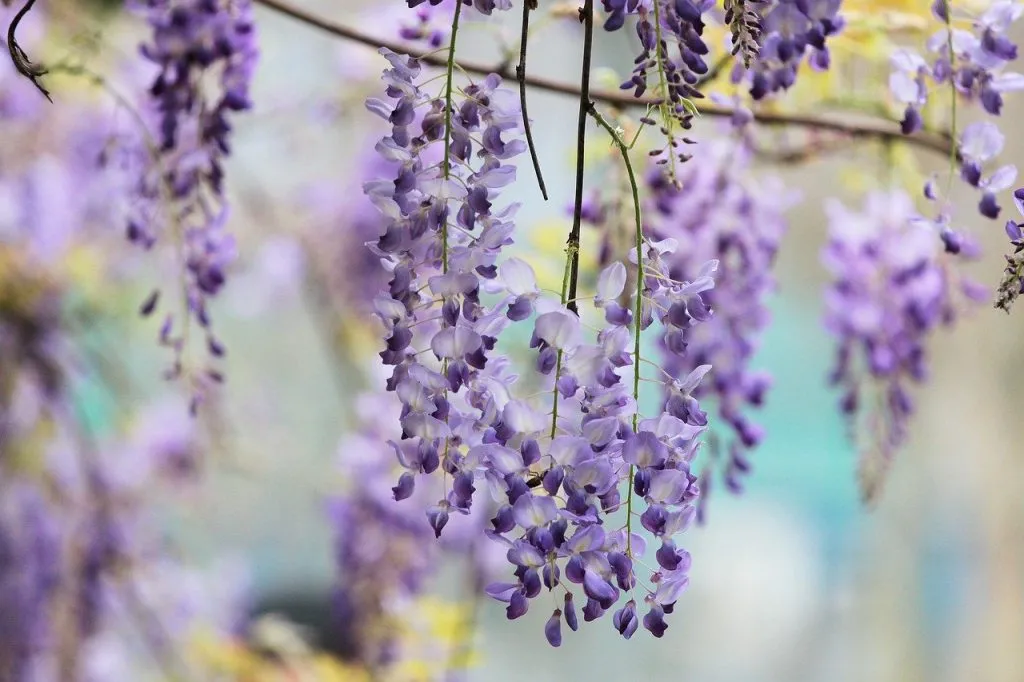
You may be asking why we don't just skip straight to the winter prune in summer after the wisteria has flowered. The reason we don't prune wisteria straight back to 3 in summer is threefold:
Wisteria responds really well to a hard prune, and an established plant will often bounce back with vigorous regrowth the following year.
Care must be taken, though, as a serious hard prune, to within a foot or so of the ground will come at the cost of reduced flowers. Hard pruning wisteria will set back the flowering potential of your climber by at least 1 year. So it's worthwhile considering whether you really need to hard prune your wisteria or whether a mere renovation prune will suffice.
I only hard prune back damaged wisterias. Such as specimens that have been damaged in the wind or have broken free from their structures to snap or tear their limbs.
My video below shows the principles of how to hard prune to show you the technique. Clean, sharp loppers or a wood saw are essential.
I take back the plant by 50% for old wisterias that look out of control. Still using the same 3 and 6 rule as shown above. I find this preferable to going back to the ground.
Wisterias are often grown up and over pergolas which can confuse beginner gardeners when pruning. It's often daunting knowing where to start. My advice for pruning wisterias over pergolas follows the same advice as above but with a few additional pointers.
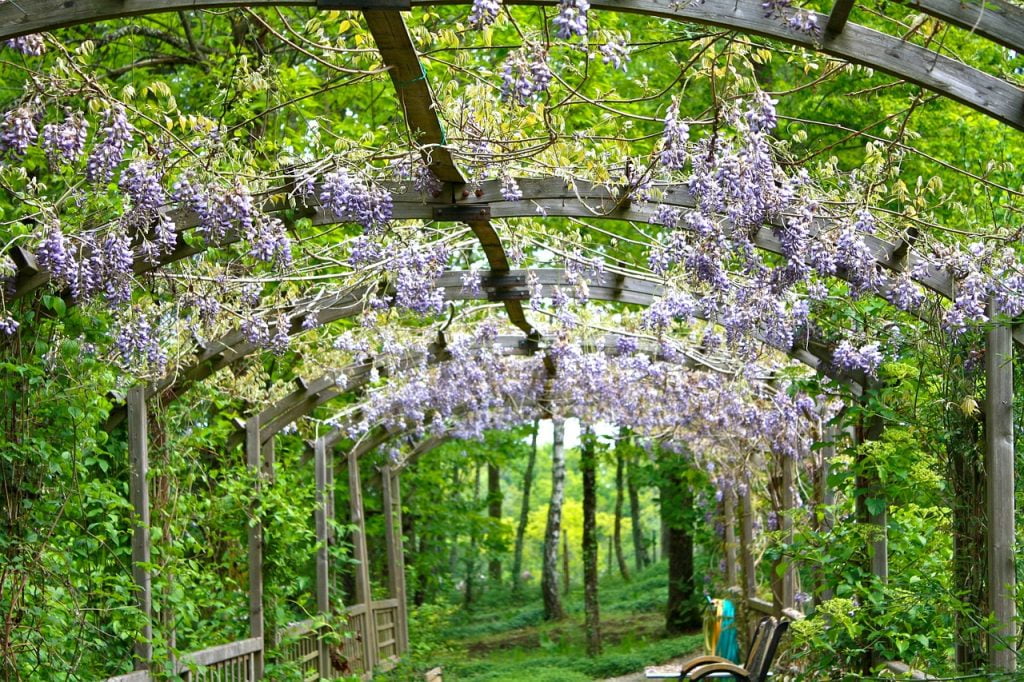
Once your wisteria has finished flowering, cut off the flowers can help keep it neat and tidy. It also helps reserve energy for the plant to recover after the effort required to flower. Some gardeners believe it can help encourage further flowering. However, in my experience, the buds for flowering develop early spring so removing spent flowers won't cause a second flush. However, it is good for garden hygiene to remove them to stop seed setting or energy being wasted.
In my experience, wisterias rarely need any plant feed. They are vigorous climbers that take a number of years to get established, but when they do, they will grow and flower profusely!
Feeding wisterias should only be done if:
For most wisterias, I would always prefer a yearly mulch of some decent quality peat-free compost or a very dilute liquid feed with home made comfrey tea. Feed your wisteria in spring and never summer. Feeding in summer just causes lots of leafy growth that you then have to prune out. Feeding in spring gives the wisteria the energy it needs to flower, but as I said, I wouldn't bother unless you have an old or recently hard-pruned wisteria.
Wisteria is generally a hardy and low-maintenance plant, but it can be susceptible to a few pests and diseases. Which can throw off the beginner gardener if you're not aware of them. For most growers, your wisteria will be fine, but for the odd few, here are some problems you may run into along with some suggestions for solutions.
Aphids are small insects that feed on the sap of wisteria plants, often congregating on new growth and flower buds. They can cause distorted growth and may excrete honeydew, leading to the growth of sooty mold. Control aphids by spraying affected plants with a strong stream of water to dislodge them, using insecticidal soap or neem oil, or introducing natural predators like ladybugs.
Scale insects are small, oval-shaped pests that attach themselves to wisteria stems and leaves, sucking sap from the plant. They may appear as small bumps or shells on the plant surface. To control scale insects, prune away heavily infested areas, scrub scales off with a soft brush or cloth dipped in soapy water, or use horticultural oil sprays.
Japanese beetles are metallic green beetles that feed on wisteria foliage, skeletonizing leaves and causing significant damage. Handpick beetles from plants in the early morning when they are sluggish, and drop them into a bucket of soapy water. You can also use beetle traps placed away from wisteria plants to attract and capture beetles.
Powdery mildew is a fungal disease that appears as a white, powdery coating on wisteria leaves and shoots. It thrives in warm, humid conditions and can weaken the plant over time. Improve air circulation around plants by pruning away dense growth, avoid overhead watering, and apply fungicidal sprays containing sulfur or potassium bicarbonate to affected plants.
Wisteria blight, caused by the fungus Myrothecium verrucaria, can lead to leaf spotting, dieback, and overall decline of wisteria plants. Remove and destroy infected plant parts, avoid overhead watering, and apply fungicidal sprays containing copper or thiophanate-methyl to help control the disease.
Leaf spot diseases, caused by various fungal pathogens, can cause dark spots or lesions on wisteria leaves. To prevent leaf spots, avoid overhead watering, prune away infected plant parts, and apply fungicidal sprays if necessary.
Root rot can occur in wisteria plants growing in poorly drained or waterlogged soil. Improve soil drainage by amending heavy clay soils with organic matter, avoiding overwatering, and ensuring that plants are planted at the correct depth to prevent the crown from becoming waterlogged.
Regularly inspecting your wisteria plants for signs of pests and diseases, practicing good cultural practices such as proper pruning and watering, and addressing issues promptly can help keep your wisteria healthy and vibrant in the garden. Don't give up Ninjas!
Wisteria can add a real wow factor to your garden in summer and provide a soft green canopy to climb up walls or pergolas. For wisterias to perform consistently, pruning them twice a year is a must. Now that you know how to prune your wisteria, you will be set for success.
Hopefully, this guide will have given you the confidence to enjoy pruning and understand why cutting back your wisteria increases the chances of those gorgeous flowers!
Want to watch more pruning guides? Take a look at my Rose Pruning & Hydrangea pruning guides below!
I’d love to hear from you on my Twitter, Facebook or Instagram pages. If you have a gardening question then why not use the Garden Ninja Gardening Forum, where hundreds of Garden Ninja members can help you!
Happy Gardening!



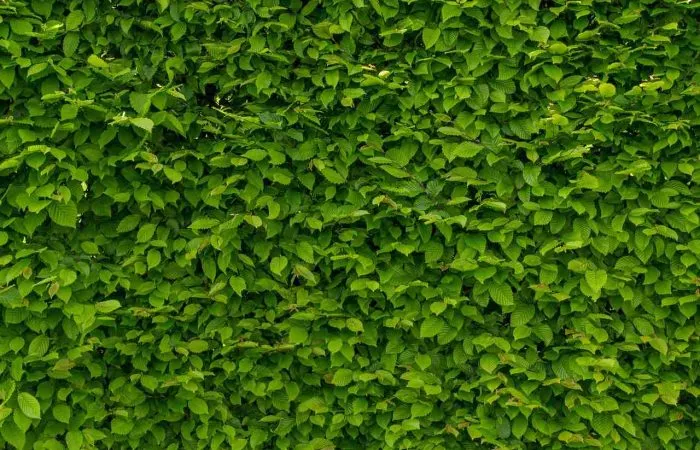
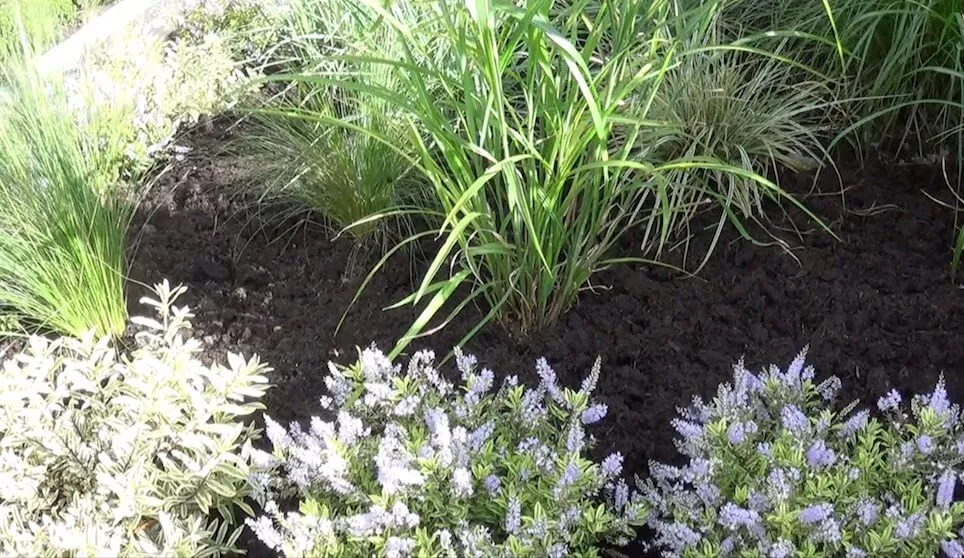
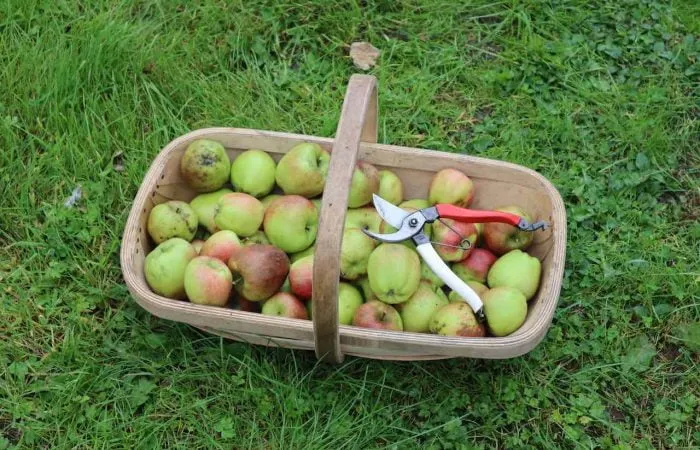

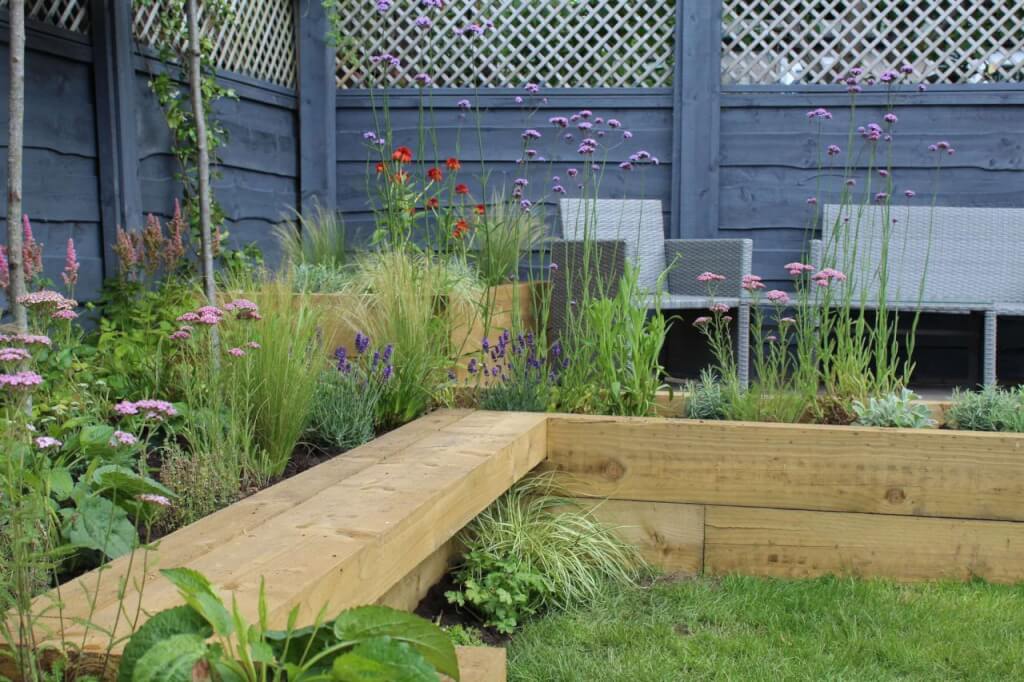


JOIN THE NINJAS
Join our Ninja community for extra guides & Discount Codes for Online Garden Courses!
This is really useful and I do hope that after nearly three years of having zero flowers on my ‘inherited’ ( it was at my home when we moved in) that we finally see some flowers! Thank you! Just one question – my wisteria is planted in the ground…. What should I feed it with? Many thanks!
Hi Rebecca, I wouldn’t feed a wisteria unless showing signs of illness or yellowing leaves. They simply don’t need feeding as they are so vigorous unless your soil type is super poor. Hope that helps. Lee
i have never really pruned my wisteria, she is about 5 years old. any suggestions ? she is kinda gangly
Hi Kristine. There’s still time now so I’d get out there and nip her back to 3 buds pronto! Good luck with the pruning and happy gardening. 🥷🌿🤘
Hello, do I still nip them ti 6 buds this summer even though it has never flowered?
Hi Florence, Yes this way you’re conserving energy for it to flower next year! Happy Wisteria pruning. Lee
Thank you for all of the helpful information!
I am trying to train my wisteria to grow over a pergola. How do I get it to keep growing to cover if I am cutting back to the third bud? I feel like I’m missing some thing.